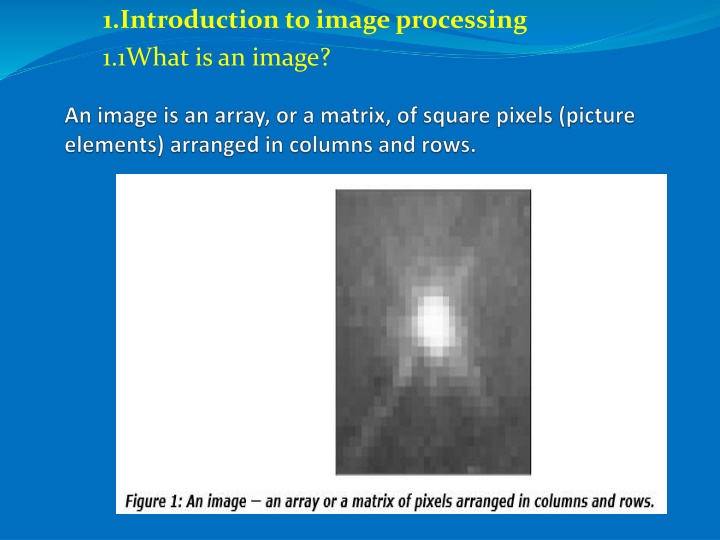
Digital Image Formation in Image Processing
Explore the basics of digital image formation, including color depths, the process of forming a digital image, image representation, and examples to deepen your understanding of image processing.
Download Presentation

Please find below an Image/Link to download the presentation.
The content on the website is provided AS IS for your information and personal use only. It may not be sold, licensed, or shared on other websites without obtaining consent from the author. If you encounter any issues during the download, it is possible that the publisher has removed the file from their server.
You are allowed to download the files provided on this website for personal or commercial use, subject to the condition that they are used lawfully. All files are the property of their respective owners.
The content on the website is provided AS IS for your information and personal use only. It may not be sold, licensed, or shared on other websites without obtaining consent from the author.
E N D
Presentation Transcript
1.Introduction to image processing 1.1What is an image?
A normal grey scale image has 8bit color depth = 256 greyscales. A true color image has 24 bit color depth = 8 x 8x 8 bits = 256 x 256 x 256colours = ~16million colors. Some greyscale images have more greyscales, for instance 16 bit = 65536 greyscales. In principle three greyscale images can be combined to form an image with 281,474,976,710,656 greyscales.
How a digital image is formed . . Since capturing an image from a camera is a physical process. The sunlight is used as a source of energy. A sensor array is used for the acquisition of the image. So when the sunlight falls upon the object, then the amount of light reflected by that object is sensed by the sensors, and a continuous voltage signal is generated by the amount of sensed data. In order to create a digital image , we need to convert this data into a digital form. This involves sampling and quantization. (They are discussed later on). The result of sampling and quantization results in an two dimensional array or matrix of numbers which are nothing but a digital image.
A Simple model of image formation The scene is illuminated by a single source . The scene reflects radiation towards the camera . The camera senses it via solid state cells (CCD cameras)
There are two parts to the image formation process: (1)The geometry, which determines where in the image plane the projection of a point in the scene will be located. (2) The physics of light, which determines the brightness of a point in the image plane. Simple model: f(x,y) = i(x,y) r(x,y) i: illumination( ), r: reflectance( )
Image Representation The image can now be accessed as a two-dimension array of data, where each data point is referred to a pixel(picture element) for digital images we will use the following notation: I(x,y)= The brightness of image at the point (x,y) Where x= row and y= column. "when we have the data in digital form, we can use the software to process the data". The digital image is 2D-array as In above image matrix, the image size is (NXN) [matrix dimension]then : Ng=2m Where Ngdenote the number of gray level m is the no. of bits contains in digital image matrix.
Example: If we have (6 bit)in 128x128 image. Find the no. of gray levels to represent it, then find the no. of bit in this image? Solusion Ng=26 Ng=64 Gray level Nb=128*128*6=9.8304*104bit.






















